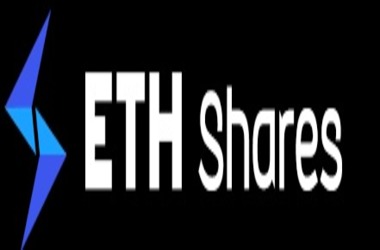IRS issues guidance on non-fungible tokens what it says and doesn’t say | Baker Hostetler

Important takeaways
- Notice 2023-27 (the Notice) is the first guidance the IRS has issued on non-fungible tokens (NFTs) and addresses the tax treatment of transactions where NFTs are acquired by individual retirement accounts (IRAs).
- The notice notifies taxpayers that the IRS intends to issue guidance that certain NFTs will be considered collectibles under section 408(m) of the Internal Revenue Code of 1986, as amended (the Code), which provides that an IRA that purchases any “collectible” will be treated as having distributed such collectible.
- Pending expected future guidance, the IRS intends to use a “look through” approach to analyzing whether an NFT is or is not a Section 408(m) collectible. Under this approach, if the NFT’s related right or asset is determined to be a Section 408(m) collectible, the NFT is also a Section 408(m) collectible.
- The classification of an NFT as a section 408(m) collectible is significant because collectibles that qualify as capital assets are subject to a maximum 28 percent long-term capital gains rate, which is higher than the capital gains rates applicable to capital assets that are not collectibles.
- The IRS is requesting comments on the proposed guidance by June 19, 2023, on a number of issues, including the specific factors that should be considered in determining whether a “digital file” and, in turn, an NFT constitutes an artwork under section 408( m) and the broad question of what other guidance taxpayers want relating to NFTs.
- Taxpayers with significant NFT activities should strongly consider taking advantage of the opportunity to influence the upcoming guidance by submitting comments to the IRS on or before the June 19, 2023 deadline.
The proposed guidance and implications
The IRS and the Treasury Department announced on March 21, 2023 that they intend to issue guidance assuming that certain NFTs qualify as collectibles under section 408(m) of the Code. The notice is the first guidance issued by the IRS that addresses the US federal income tax treatment of NFTs. The IRS originally issued Notice 2014-21 in 2014 regarding virtual currencies and how they should be treated as property for federal income tax purposes. In 2019, the IRS issued Rev. Roll. 2019-24 related to whether receiving cryptocurrencies via a hard fork or airdrop resulted in taxable income for the recipient. The IRS has also released Chief Counsel Advice Memoranda that address how specific federal income tax principles (eg, like-kind exchange rules or when an asset is worthless) apply to cryptocurrencies. None of these previous guidances dealt with NFTs. Accordingly, taxpayers and their advisors have attempted to analogize NFTs to other types of property in order to draw on how the federal income tax laws treat analogous property.
The notice defines an NFT as “a unique digital identifier that is recorded using distributed ledger technology and can be used to certify the authenticity and ownership of an associated right or asset.” According to the announcement, the “associated right or asset” could be a right in respect of a “digital file” or a right in respect of “an asset that is not a digital file, such as a right to attend a ticketed event, or certify ownership of a physical object.” The notification distinguishes between NFT, which gives access to or confirms ownership of the associated right or asset, and the associated right or asset itself.
The IRS’s proposed guidance is expected to address parameters for how to determine whether an NFT is in fact a Section 408(m) collectible. The notice states that these proposed rules intend to adopt a “review analysis” that will examine whether the NFT’s associated right or asset is itself a section 408(m) collectible. An example provided by the announcement of when an NFT is a Section 408(m) collectible is an NFT that certifies ownership of a pearl, which itself is a Section 408(m) collectible. In contrast, the notice states that an NFT that provides a right to use or develop land in a virtual environment is an example of an NFT with an associated right or asset that is not a Section 408(m) collectible. Importantly, the announcement says that the IRS is still determining whether an associated right or asset that is a digital file can constitute a “work of art” and thus qualify as a Section 408(m) collectible. If it can, given that a work of art is a section 408(m) collectible, the NFT will also be a section 408(m) collectible.
Classifying an NFT as a Section 408(m) collectible has significant relevance under the federal tax laws. First, an IRA that acquires a collectible will be treated as if it distributed the collectible to its account holder, with the distribution equal to the cost of the collectible. Another consequence is that the acquisition of a collectible by an individually directed account that qualifies as a plan under § 401(a) is also treated as a distribution from the account equal to the cost of the collectible. In addition, a collectible that qualifies as a capital asset held for more than one year is subject to a maximum capital gains rate of 28 percent, which is higher than the long-term capital gains rates applicable to non-collectible capital assets.
The proposed guidance could have a significant impact on the self-directed IRA market. In 2022, the Department of Labor issued guidance warning 401(k) plan administrators to exercise extreme caution before allowing a participant to invest plan assets in cryptocurrencies due to the risks and challenges posed by cryptocurrencies. However, the guidance does not appear to apply to IRAs, and in recent years self-directed IRA products that allow investments in bitcoin and other cryptocurrencies have become more common. As these products begin to offer NFTs as investment options for IRAs, they will likely require analysis under Section 408(m) and the upcoming guidance.
The IRS requests comments on the proposed guidance
The notice solicits a wide range of comments, including on its definition of an NFT and what factors should be considered in determining whether an NFT is a Section 408(m) collectible. It also requests guidance on the proposed transparency analysis and what additional guidance relating to NFTs would be useful. There have been a number of recent challenges to the guidance by the IRS arguing that the guidance was invalid because it was a statutory rule inconsistent with the notice and comment provisions of the Administrative Procedure Act (APA).[1] The notice’s request for comments and notice that future guidance will be provided may be a response to these challenges. It may also allow future guidance to take effect from the date the notice was issued.
Several important questions remain about how NFTs should be treated for federal income tax purposes, and these questions are not addressed by the announcement. For example, the federal income tax treatment of NFTs held by dealers or creators of NFTs still lacks clarity. An NFT held by a dealer or creator cannot qualify as a capital asset; instead, it may be considered inventory or a created intangible, which will affect the tax rates applicable to the sale of an NFT held as either, and the tax accounting methods available to the dealer or creator. It is also not clear whether an NFT will be subject to the recently adopted broker reporting rules for digital assets. The notice says that a digital file is not the same as a digital asset subject to the reporting rules, but strangely, it does not mention whether an NFT qualifies as a digital asset for federal income tax purposes.
The notice’s request for comments provides taxpayers with a unique opportunity to voice their thoughts and concerns regarding the taxation of NFTs. Taxpayers with significant NFT activities should strongly consider taking advantage of the opportunity to influence the upcoming guidance by submitting comments to the IRS on or before the June 19, 2023 deadline.
[1] See Mann Construction Inc. v. United StatesNo. 21-1500 (6th Cir. 2022) (invalidating Proclamation 2007-83 where the IRS failed to satisfy the APA’s notice and comment procedures).
[View source.]























